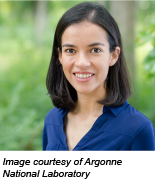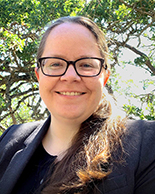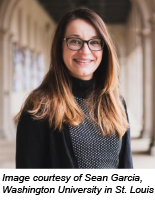Five FRIB scientific users earn 2021 U.S. Department of Energy Office of Science awards
Share this article:
Share this article:
Five scientists who have performed or will perform research at FRIB have received 2021 U.S. Department of Energy Office of Science (DOE-SC) Early Career Research Program awards.
The FRIB scientific users are among 83 selected nationwide to receive the prestigious award. Selection is based on peer review by outside scientific experts. University-based researchers will receive grants for $150,000 per year, and researchers based at DOE national laboratories will receive grants for $500,000 per year. The research grants are distributed over five years and will cover salary and research expenses.
The program, now in its twelfth year, supports exceptional scientists during the crucial years when many do their most formative work in the agency’s priority research areas. These awards are part of DOE’s longstanding efforts to support critical research at the nation’s universities and national laboratories, grow a skilled science, technology, engineering, and math (STEM) workforce, and cement America as a global leader in science and innovation.
Melina Avila Coronado

Melina Avila Coronado, an assistant physicist in the Physics Division at Argonne National Laboratory (ANL), was selected by the Office of Nuclear Physics for her proposal, “Measuring Key Nuclear Reactions for the Weak r-process.”
Avila Coronado’s project aims to develop innovative methods of measuring reaction rates important for the production of weak r-process elements, building on a technique recently developed at ANL for the direct measurement of nuclear reactions using neutron-rich beams. One of the main open questions in science is: Which astrophysical sites produce the heavy elements via the rapid neutron-capture process (r-process)? Neutrino-driven winds that follow core-collapse supernova explosions have been suggested as possible candidates for the production of the lightest heavy elements attributable to the r-process. With the development of a powerful active-target detector and the implementation of machine learning techniques for data analysis, this research will improve the understanding of nucleosynthesis from neutrino-driven winds in core-collapse supernovae.
Avila Coronado, a member of the FRIB User Organization’s executive committee, earned a bachelor’s degree in physics from the Universidad Autónoma de Nuevo León and master’s degree and PhD in physics from Florida State University. She was a postdoctoral appointee at ANL.
Heather Crawford

Heather Crawford, a staff scientist in the Nuclear Science Division at Lawrence Berkeley National Laboratory (Berkeley Lab), was selected by the Office of Nuclear Physics for her proposal, “In Beam Gamma-Ray Spectroscopy at the Limits of FRIB.”
Crawford’s research involves the study of nuclear structure through a program of strategic measurements. Measurements will focus on the most exotic magnesium, calcium and iron nuclei, as close as possible to the neutron dripline. Nuclei near the neutron dripline, the upper mass limit of existence for each element, play a key role in isotope production in stars, and their structure informs nuclear theory. Establishing how and when large neutron excess in a nucleus requires modified theoretical tools is a major question in nuclear physics that remains largely unanswered. The planned research also includes development and deployment of a thick liquid hydrogen target coupled with charged particle detectors to maximize sensitivity for spectroscopy measurements at FRIB.
Crawford earned a bachelor’s degree in chemistry from Simon Fraser University and a PhD in nuclear chemistry from Michigan State University. She was a graduate research assistant at the National Superconducting Cyclotron Laboratory, a postdoctoral researcher associate at Berkeley Lab, and an assistant professor in the Department of Physics and Astronomy at Ohio University. Crawford rejoined the nuclear structure group at Berkeley Lab as a staff member in 2015. She was chairperson of the FRIB Users Organization for five years, from 2016-2020.
Andrew Jayich

Andrew Jayich, an assistant professor in the Department of Physics at the University of California, Santa Barbara, was selected by the Office of Nuclear Physics for his proposal, “Quantum Logic Spectroscopy of Radioactive Molecules for Probing Fundamental Symmetries.”
Jayich’s project aims to study and control radioactive molecules made with heavy and exotic elements on the bottom row of the periodic table. Trapped and laser-cooled radium ions will be used to synthesize radium-based molecules, and then study their properties with quantum logic spectroscopy, a quantum information technique that was originally developed for optical atomic clocks that has recently been applied to molecules. With radium-based molecules, the project will be able to study properties of the radium nucleus and set the stage for using radioactive molecules to address profound questions centered on time symmetry violation, such as why is the universe filled with matter, but lacks antimatter?
This work will enable high-precision measurements of radioactive molecules and heavy atoms at FRIB with quantum logic spectroscopy. It will also set the stage to search for time-reversal violation using rare isotopes such as proactinium-229 harvested from FRIB.
Jayich earned a bachelor’s degree in physics from Harvard University and a PhD in physics from Yale University. He was an undergraduate student researcher at Harvard, a graduate student researcher at Yale, and a postdoctoral researcher at the California Institute of Technology and the University of California, Los Angeles.
Tara Mastren

Tara Mastren, an assistant professor in the Nuclear Engineering Program at the University of Utah, was selected by the Office of Isotope Research Development and Production for her proposal, “Nanomaterials for use in Radionuclide Generator Systems for Alpha Emitting Radionuclides.”
Targeted alpha therapy (TAT) is a method of interest for the treatment of cancer, which utilizes alpha particles emitted during decay to kill cancer cells. These particles travel very small distances in tissues (~10 cell lengths) resulting in maximum dose to the tumor with minimal impact to the surrounding healthy tissues. The therapy is delivered to cancer cells by attaching the radionuclides to targeting vectors that act as mailmen delivering the deadly package directly to the cancer cells.
Alpha emitting radionuclides of interest are in short supply and high demand. Furthermore, many of these radionuclides have short half-lives requiring the use of radionuclide generator systems for their supply. Currently, radionuclide generators for alpha emitters fail at quantities relevant for clinical application. Mastren's work seeks to improve these systems by developing metallic based systems, which are more resistant to radioactivity. If successful, these improved systems would increase the supply of these valuable radionuclides for use in cancer therapy applications.
Mastren did her thesis work at Washington University in St Louis on Isotope Harvesting at Heavy-Ion Fragmentation Facilities. This work included the initial proof of principle experimentation for developing isotope harvesting abilities at FRIB.
Mastren earned a bachelor’s degree in chemistry at Maryville University and a doctorate in nuclear and radiochemistry at Washington University in St. Louis. She was a postdoctoral researcher in radiology at the University of Texas Southwestern Medical Center and a postdoctoral researcher in the isotope program at Los Alamos National Laboratory.
Maria Piarulli

Maria Piarulli, an assistant professor in the Department of Physics at the Washington University in St. Louis, was selected by the Office of Nuclear Physics for her proposal, “From Atomic Nuclei to Infinite Nucleonic Matter within Chiral Dynamics.”
Piarulli’s research aims to develop theoretical and computational methods to accurately explain nuclear properties emerging in light nuclei and large systems like neutron stars. Starting from a realistic description of the nuclear interactions and currents, she performs microscopic calculations of nuclear structure and reactions to explain classes of phenomena that plays a major role in the birth and evolution of the universe, in astrophysical environments, in energy production through fission and fusion reactions, and in industrial and medical applications via use of stable isotopes and radioisotopes. These studies directly address some of the fundamental questions at the frontier of nuclear science and complement the U.S. Department of Energy’s major investments in supporting present and future nuclear physics experiments, including FRIB.
A particular strength of Piarulli’s work relevant to the FRIB program is the formulation of realistic nuclear interactions and electroweak currents that are the main input of sophisticated computational methods used to study the structure and reactions of nuclei and properties of infinite nucleonic matter. Example of these studies include calculations of energy levels, charge radii, and elastic form factors; calculations of beta decay and neutrinoless double beta decay matrix elements; calculations of the equation of state of pure neutron matter, and calculations of two-nucleon spatial and momentum distributions.
Piarulli, an assistant professor at Washington University St. Louis, under the FRIB Theory Alliance Bridge Faculty program, earned undergraduate and master’s degrees in physics from University of Pisa in Italy and a doctorate from Old Dominion University. She was a postdoctoral fellow in the theory group at Argonne National Laboratory.
Michigan State University establishes and operates FRIB as a user facility for the Office of Nuclear Physics in the U.S. Department of Energy Office of Science.
The U.S. Department of Energy’s Office of Science is the single largest supporter of basic research in the physical sciences in the United States and is working to address some of the most pressing challenges of our time. For more information, visit energy.gov/science

